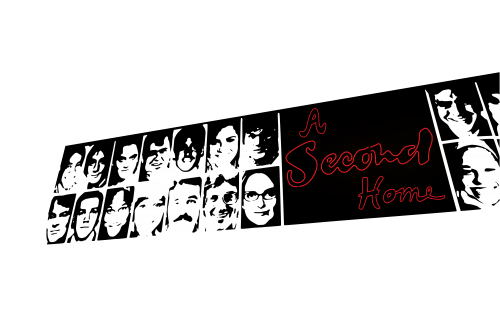Making people laugh is no easy feat. In Chicago’s Old Town Triangle — just a few CTA stops away from the heart of DePaul — Second City thrives, feeding off the self-deprecating nature of the city and bringing laughs three days a week to a revolving door of audiences looking for a laugh or something to do on a weekend.
For the actors who work at the comedy theater, it’s an opportunity to get to know themselves, other actors and the craft of comedy, whether that be for the stage or television — thanks to classes that allow students to learn and specialize in different topics. For the DePaul students who have been able to work at Second City and take classes, there’s no better place to test out comedic chops than the hollowed halls of the iconic comedy outlet.

The impact of improv on Chicago, specifically the Second City “brand” of improv, is one that has woven its way into the storied nightlife of the city and welcomed people from all backgrounds to learn the craft.
Students are typically first introduced to The Second City as freshmen on the first weekend of autumn quarter when they are given the opportunity to attend a free show at the theater. For some that’s the start of the connection to Second City.
DePaul has its own comedy troupes, such as DePaul Improv and Sketch Comedy (DISC), that help students ease into the comedy scene at DePaul and around the city, but none have the history or connections as Second City does.
The connection between DePaul and the comedy scene in Chicago can be seen through the number of students who take classes at The Second City, or any of the other comedy theaters around the city, or who apply the same comedic principles learned and taught at Second City to their comedy at DePaul. For students and alumni who take classes at the theater, the experience allows them to build on their improv skills and take something intangible with them when they leave.
For Jessie Keary, a DePaul alumna, improv was something she got into in high school and pursued, through Second City, in college. She continues to do shows in the theater’s spaces.
Many, including Keegan Michael-Key, Stephen Colbert and Tina Fey, have walked through the doors and have their headshots shown in the theater’s revamped spaces, in a double-decker banner showing well-known comedians who have gone on to SNL, MadTV, movies or television.
Cast faces, from the ’60s, ’70s, ’80s, ’90s and early aughts, line the walls of The Second City. Some are delivering punch lines, some — due to slapstick and physical comedy — are the punch line. For DePaul students who are interested in comedy or just taking introductory improv classes they learn the fundamentals of the craft just as they would the fundamentals of a democracy.
To appeal to students who may be interested, DePaul expanded its course offerings. The school now offers comedy classes that help students craft a stand-up or improv routine that they can then perform at comedy clubs around the city.
DePaul offers comedy classes that help students craft a stand-up or improv routine that they can then perform at comedy clubs around the city. Though the various comedic outlets allow the school — and city — to appeal to more people, improv remains a favorite for the lessons that can be taken away from one class setting and applied to another, and Second City remains a favorite because of its history and the atmosphere it offers students.
Sheena Laird, a graduate of DePaul University and adult program coordinator who took classes while still a student at DePaul, ran the gamut of positions at Second City, sticking behind the scenes for the most part but applying the skills she learned outside of the classroom.
“Improv classes help me forgive mistakes — they help you learn human skills,” Laird said. “The people in my classes all walked away with new friends and skills. It helped me be a team player and be more patient with others and myself.”
Applying the skills learned in improv classes at Second City to classes or situations related to DePaul has helped some find their place in the city or their careers. Some pay that feeling forward to newcomers.
Matt Hovde, the current artistic director of The Second City’s training centers, also started as a student and worked his way through various roles at Second City. However, he didn’t attend DePaul.
“It was a place I always wanted to come to, to absorb the way of thinking,” Hovde said. “It’s rare to work in an environment where failure is allowed and where you can work through it to make something better.”
“I had such a great experience here as a student that I try to pass it on,” Hovde said. “I’m just trying not to mess that up.”
The Second City has expanded to continue to appeal to more interests. They recently added the Harold Ramis Theater and launched a restaurant in spring — the firetruck-red doors of its original space now serve as the doors to the restaurant where theater-goers can grab a bite to eat or drink around showtime.
Laird said that seeing shows at Second City is helpful to people who are trying to get a feel for the culture and vibe of The Second City and said that “there is a place for every DePaul student” no matter their purpose for attending classes. Hovde agreed.
“Some people come to be famous, some people come for fun and some come to build their skills,” Hovde said. “Our challenge is to help them all.”

